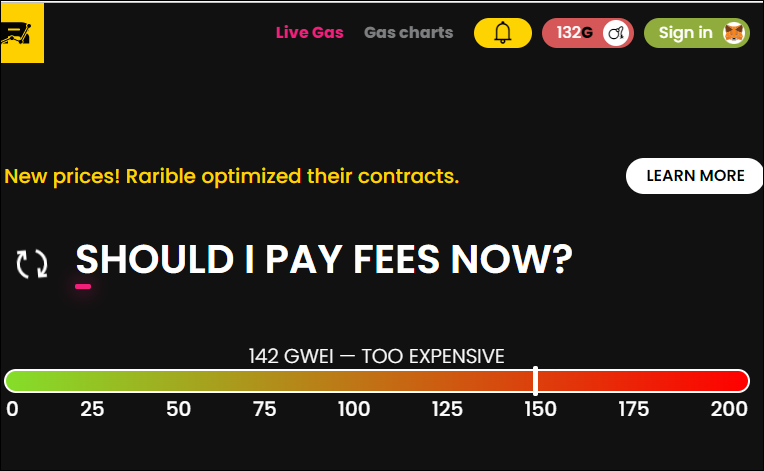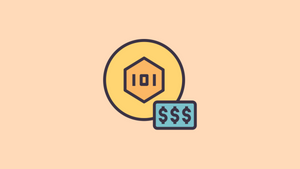NFTs may be the recent fad the world is obsessed with, but it’s far from something that everyone understands. And it’s not anyone’s fault. No one would disagree that NFTs are anything but complicated. There’s a lot to understand there, but the most challenging and confusing aspect? Gas Fees – no contender there.
Gas Fees definitely has people pulling out their hair in frustration. It’s a good thing you’re here so we can save your hair. Gas fee is difficult but not impossible to conquer.
Here’s your guide to understanding gas fees so you can fearlessly sell or buy NFTs.
Understanding Gas Fees on Blockchains
The gas fee is inseparable from NFTs. Once you hop on the NFT bandwagon, the one thing you’ll quickly learn is that you don’t need money just to buy an NFT, but also to create and sell one.
And contrary to what first glimpses of NFTs will have you believe, they don’t always sell for millions or hundreds of thousands of dollars. Most NFTs sell for moderate prices of a few hundred dollars, and many others will never sell at all. Since you’ll be paying gas fees for creating and selling your NFTs, there’s a chance you’ll end up losing money than making profits.

And there’s no way of knowing what amount you’ll be spending since gas fees keep on changing. This makes it even more difficult to get a handle on things.
To understand gas fees, it’s important to have a brief understanding of the underlying technology that’s responsible for it.
Blockchain: A Brief Explanation
NFTs are non-fungible tokens that, similarly to cryptocurrency, live on blockchains. Of course, many might accuse me of oversimplifying matters as NFTs don’t themselves reside on the blockchain, but their tokens do. But we don’t need to go that deep to understand gas fees. This will suffice.
Blockchain is a decentralized database. A network of peer-to-peer computers maintains this database and no company owns it. Since there is no central authority, the responsibility to maintain and update the ledger lies with the nodes that are part of the network, also known as miners.
Many NFT supporting blockchains, like the most popular Ethereum, use a proof-of-work consensus algorithm to validate the blockchain. The proof-of-work system requires the miner to solve complex computational puzzles to add transactions on the blockchain. To solve these puzzles, miners have to spend a considerable amount of energy. This is intentional as it discourages manipulation of the blockchain.
Since miners spend a considerable amount of energy to perform a transaction, they are rewarded for their efforts. Here comes gas. Let’s understand the concept of gas with the example of Ethereum, the blockchain most used for NFTs.
What is Gas?
Gas is the unit that measures the amount of computational power required to perform a transaction on the blockchain. Akin to the gas you put in your car, this gas fuels all specific actions that you execute on the blockchain.
For every transaction on the Ethereum blockchain, you have to perform a series of computational steps. And each step needs resources to perform. And someone needs to pay for the use of these resources. The miners won’t pay for these out of their pocket. So, it’s the end-users who have to pay for the use of resources to execute a transaction on the blockchain. This fee that you have to pay for the amount of gas that is used for your transaction is known as the gas fee.

The gas fee is separate from the price of the ETH, i.e., Ethereum’s native cryptocurrency Ether, and has nothing to do with its value. The gas fee is a very small fraction of ether. It uses a unit called gwei which is equal to 0.000000001 ETH. You have to compensate to use the Ethereum Virtual Machine (EVM), i.e., to ask miners to perform a transaction on your behalf in generally a few gwei.
Why do Gas Prices Fluctuate?
Things aren’t simple since gas fees keep on fluctuating. Why do gas fees rise sometimes? The simplest answer behind this is “Supply and Demand.”
When the demand for the Ethereum network is high, the amount of gas fee increases. When the demand for the network is high, miners can choose to ignore the requests where the gas fee is less. This structure of the Ethereum network often leads to high gas fees when the network is in high demand. Sometimes, the gas fees have even exceeded the actual price of the NFT by thousands of dollars.
The gas fee also varies depending on the speed of the transaction. If you want your transaction to execute faster, you’ll have to pay more. If you’re fine with waiting longer, you don’t have to pay additional gas fees.
But still, gas fees are not as volatile as they used to be.
The London Hard Fork
Etehreum recently implemented the London hard fork earlier in the summer of this year. Before the London upgrade of the Ethereum network, the inner working or formula for calculation of the gas fees was simpler. But the prices were more unpredictable.
Before, the gas fee used to follow the model of an open auction. So, users had to guess how much gas fees they should pay so the miner would accept their bid.
Since the implementation of the London upgrade, Ethereum has changed how the gas fees are calculated. Each block has a base fee that needs to be paid to get your transaction on the blockchain.
This base fee can change depending on the need of the network. If the demand for the previous block was high, the base fee can increase up to 12.5%. Since every time, the base fees can only increase by a maximum of 12.5% than the previous block, it makes it easier to predict the fees for the next block.
In addition to the base fee, users can also include a tip for the miners. Ethereum now burns the base fee for each transaction and the miner only receives the tip. To prioritize your transaction, you can include a larger tip.
The base fee and the tip are multiplied by the units of gas needed which has an upper limit and depends on the type of transaction and the size of block needed. For simpler transactions like transferring ETH from one wallet to another, the upper limit for the amount of gas needed is 21000 units.
Since smart contracts require more computational resources, the amount of gas needed also increases.
Which Transactions Require Gas Fees?
In the world of NFTs, you have to pay gas fees for a lot of actions. In fact, every step has some form of gas fees associated. Even if you go on to add funds to your wallet or convert ETH to WETH, you’ll have to pay the gas fees.
Creating an NFT
Whenever you go to create your NFT, you’ll most likely have to pay gas fees. To create an NFT, you have to mint its token on the blockchain. Minting a token on the blockchain means including the information about the smart contract of the NFT and its metadata on a block in the blockchain. As it requires you to interact with the blockchain, you’ll need to pay gas fees.
Some marketplaces like OpenSea and Rarible offer the option of lazy minting but not all marketplaces do. Lazy minting puts off the minting of your NFT token on the blockchain to a later time when someone buys it. In most of these instances, it is generally the buyer who has to pay the gas fees instead of the seller. Nonetheless, a gas fee is required in one way or another.
Selling an NFT
When you list an NFT for sale, most marketplaces don’t charge any fees but some do charge service fees right away. Others charge this fee when the NFT is sold, along with the gas fees needed to pay for completing the sale.
A few marketplaces follow the model where the buyer pays the gas fees when you sell an NFT at a fixed price. When you auction off the NFT, most marketplaces require you to pay the gas fees to accept the highest bid. Some marketplaces like OpenSea cover the gas fees for you for auctions and only require you to pay the service fees to the platform.
All in all, gas fees are there but the amount to be paid or who will pay it will vary for marketplaces. So, before you decide to sell on a marketplace, it’s important to understand how they operate.
Buying or Reselling an NFT
It’s not just the sellers who have to face the problem of the gas fees. Whenever you place an order for an NFT or even cancel one, you have to pay the gas fees. As when the sale is completed, a gas fee needs to be paid to move the cryptocurrency from your wallet to the seller’s wallet.
And if the NFT has been lazily minted, you’ll also have to pay the gas fees needed to mint it.
Transferring the NFT to someone else’s wallet will also incur gas fees. Additionally, when you’re reselling the NFT, some funds are sent to the creator based on the royalties defined in the smart contract. When these funds are transferred to the creator, gas fees are again involved. There are also the normal gas fees associated with selling an NFT.
Navigating Gas Fees
When you make a foray into the world of NFTs, you’ll quickly learn that gas fee is unavoidable. But is it possible to minimize the gas fees you have to incur? The gas fee isn’t something anyone can control, so you can’t exactly minimize your expenses. But you can take a few steps to make sure you don’t end up paying exorbitant fees.
- Understand the blockchain you want to trade your NFTs on. Ethereum might be the most popular blockchain for NFTs, but it’s not the only one. There are other blockchains which support NFTs and don’t have as high gas fees.
- Be sure to research the NFT marketplace where you intend to create, sell, or buy an NFT. Different marketplaces have different policies in place when it comes to gas fees.
- Review the variation of gas prices at different times. There are times when the gas fees are unreasonably high. If you can, avoid minting them at these times. There are also various tools you can use to check the trends in gas fees.
- Rarible Analytics is one such tool which shows the current gas fee on the Rarible marketplace. You can see whether the gas fee is falling in the expensive category at the moment or is it okay to interact with the blockchain.
- NFT Gas Station is another tool that gives you an idea of the gas fees on various marketplaces for different actions. You can also check the gas fees you’ll have to pay for slow, average, and fastest transaction time on the blockchain.

Gas fee is definitely complicated but it is a necessary evil if you wish to partake in the world of NFTs. Hopefully, this guide will help you understand it a little bit better so you can take better decisions when spending your money.





Member discussion